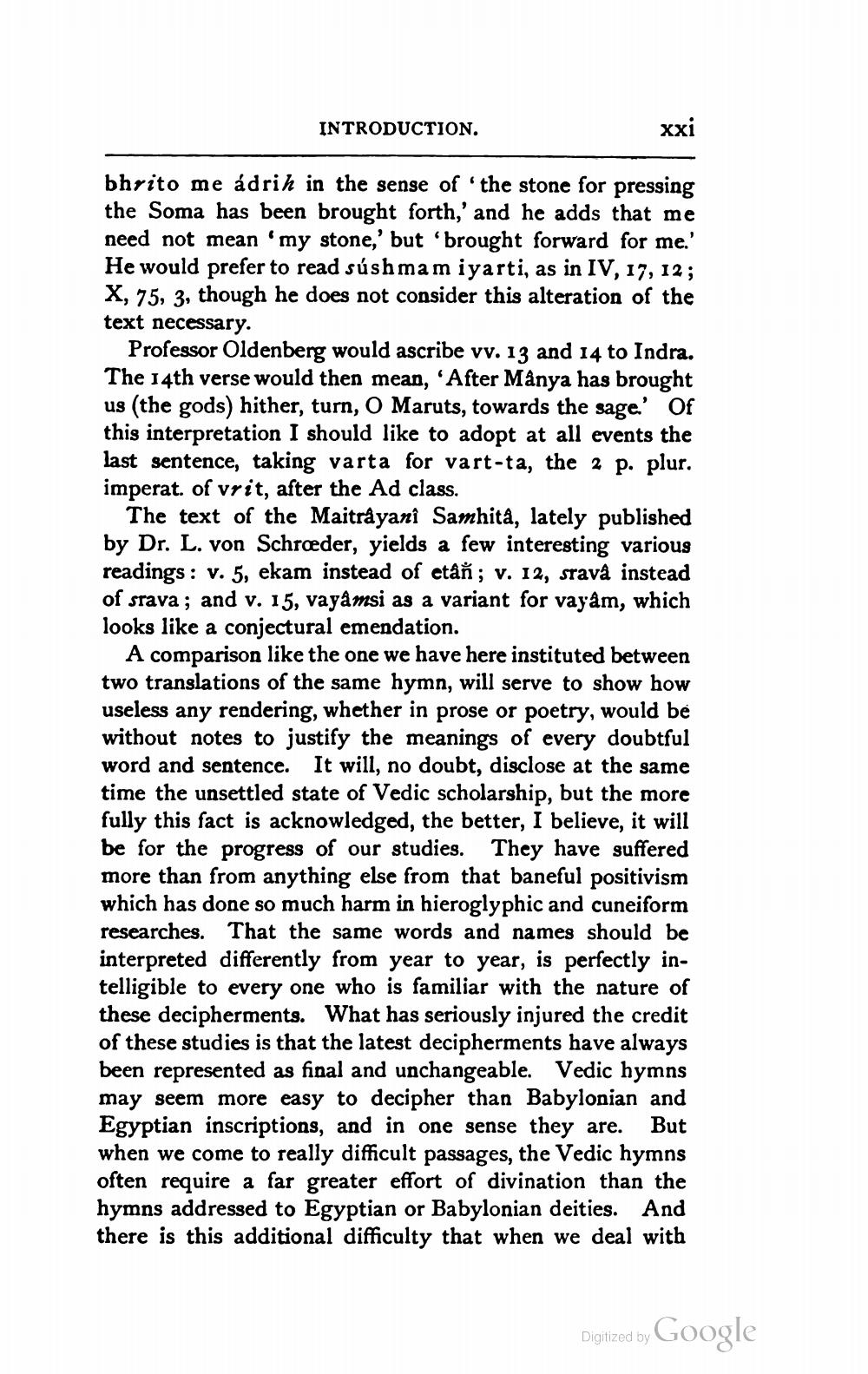________________
INTRODUCTION.
xxi
bhrito me ádrih in the sense of the stone for pressing the Soma has been brought forth,' and he adds that me need not mean 'my stone,' but 'brought forward for me.' He would prefer to read súshmam iyarti, as in IV, 17, 12; X, 75, 3, though he does not consider this alteration of the text necessary.
Professor Oldenberg would ascribe vv. 13 and 14 to Indra. The 14th verse would then mean, 'After Mänya has brought us (the gods) hither, turn, O Maruts, towards the sage.' Of this interpretation I should like to adopt at all events the last sentence, taking varta for vart-ta, the 2 p. plur. imperat. of vrit, after the Ad class.
The text of the Maitrayanî Samhità, lately published by Dr. L. von Schroeder, yields a few interesting various readings : v. 5, ekam instead of etåň ; v. 12, stava instead of srava ; and v. 15, vayamsi as a variant for vayam, which looks like a conjectural emendation.
A comparison like the one we have here instituted between two translations of the same hymn, will serve to show how useless any rendering, whether in prose or poetry, would be without notes to justify the meanings of every doubtful word and sentence. It will, no doubt, disclose at the same time the unsettled state of Vedic scholarship, but the more fully this fact is acknowledged, the better, I believe, it will be for the progress of our studies. They have suffered more than from anything else from that baneful positivism which has done so much harm in hieroglyphic and cuneiform researches. That the same words and names should be interpreted differently from year to year, is perfectly intelligible to every one who is familiar with the nature of these decipherments. What has seriously injured the credit of these studies is that the latest decipherments have always been represented as final and unchangeable. Vedic hymns may seem more easy to decipher than Babylonian and Egyptian inscriptions, and in one sense they are. But when we come to really difficult passages, the Vedic hymns often require a far greater effort of divination than the hymns addressed to Egyptian or Babylonian deities. And there is this additional difficulty that when we deal with
Digitized by Google




